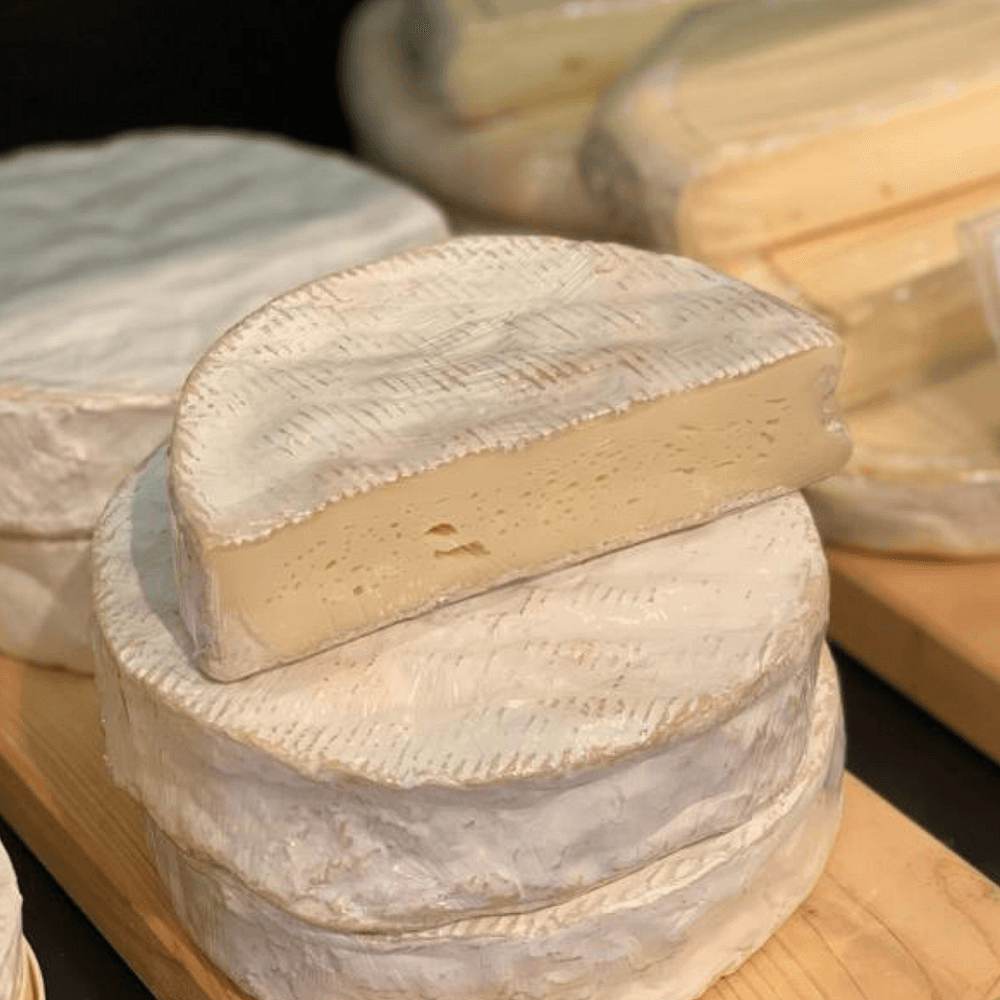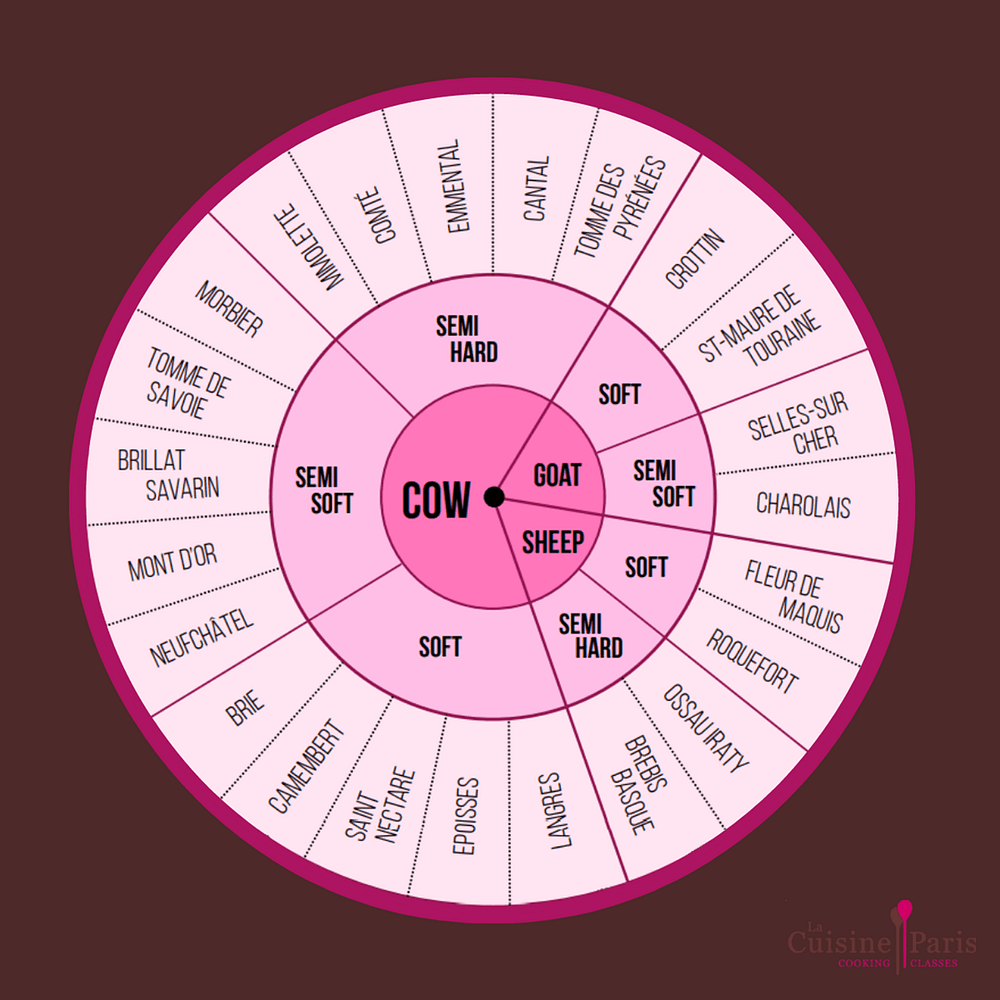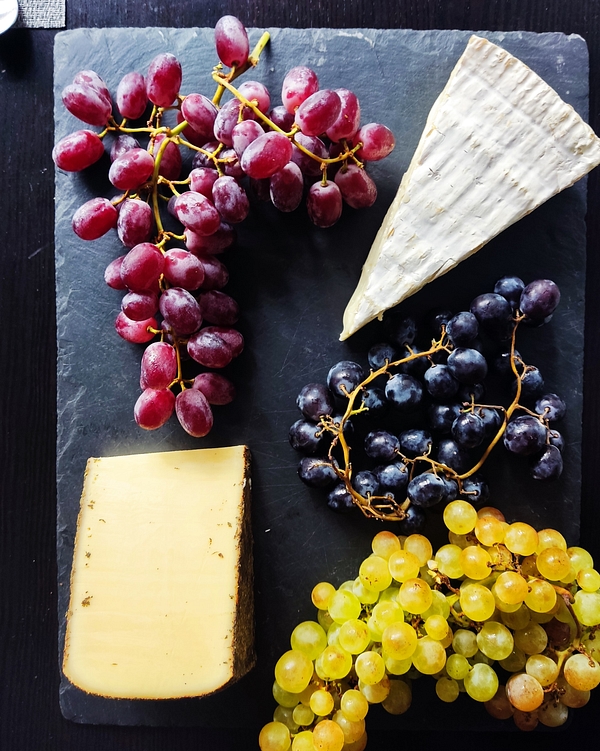
There is so much to discuss in the realm of French cheese that we couldn’t possibly cover all of it, it would take us about the same amount of time to taste and review each one of the 1200 cheeses. What we have done is put together a small guide so that you can feel alaise (at ease) walking into your neighborhood fromager and ordering your slice of heaven with confidence!
Your Cheese Milk Groups
French cheese is organized into three main categories, cow, goat, and sheep. While the cheese display might look stupendously packed and not particularly newbie-friendly, most fromagers will group each separate milk type together, to bring a little order to things.
Here is a 'Where is Waldo' trick using some well-known cheeses (don't worry, if you don't recognize them, there are labels, phew!): You will find the Camembert in the cow's milk section, the Roquefort will lead you to the sheep's milk and lastly, the Crottin is your cue for goat's milk. Still with us? Great! So, now you may be wondering, what’s the difference? Well, that’s a loaded question. With over a thousand varieties of French cheeses, many factors affect the taste: the breed, what the animal has eaten, how the cheese is processed, the aging process, the terroir, etc.
Thankfully there is a general rule of thumb for the taste of each milk type:
Goat Cheese contains a protein that produces small curds with a texture that crumbles easily. They are distinctly whiter in color compared to the other milk from the high levels of Vitamin A it contains. It's characterized as a light, bright, slightly acidic, and delightfully tangy cheese. Young goat cheese is soft, and creamy, and highlights the tanginess of the milk. As it ages, the texture becomes more crumbly and earthier in flavor.
Sheep Cheese contains a high-fat content, giving it its buttery, nutty, rich flavor. Need we say more? And if you like gamey, young sheep cheese would be your perfect choice!
Cow Cheese is an easy crowd-pleaser out of the three kinds of milk. While there is a slight earthiness, cow's milk is mild, and neutral, and doesn't have a distinct flavor that would ruffle anyone's feathers.

Seasonal Cheeses
Like all products, cheese is seasonal too, so feel free to ask your local Fromager what is it in season.
Some cheeses will have different variations of maturity that will change their flavor; thus, it is important to let your cheese monger know when you plan to eat your cheese and how strong you like your cheese. If you are building a plateau de fromage, opt for different milks, textures, and colors, and let the fromager advise you on the order to enjoy them. The moral of the story, is let the experts do what they do best, they will be ever so happy to advise!
Deciding By Texture
Another way to pick your fromage is by texture, whether you like them soft, semi-soft, or hard. As most people don't buy a whole wheel of cheese at a time, your fromager will use the 'open' cheeses as their display fromage. This will show off their inner goodness - giving you a good indication of the texture. If you are a fan of the delightful one-slice-and-it melts-on-your-plate kind of cheeses, be on the lookout for the sunken small round cheeses sold en entier (as a whole) for obvious gooey reasons.
If you like soft cheeses: Saint-Félicien - a perfect choice for lovers of the creamy rich fromages! This cow cheese has an earthy, mushroomy, nutty flavor best enjoyed between April and September with a chilled bottle of Sancerre or a light, fruity red. Learn more here.
If you like semi-soft cheeses: Maroilles - the best-known washed-rind cheese in the whole of France! It has a lingering flavor beyond the initial creaminess and makes a great addition to a plateau de Fromage at the end of a meal. It's at its best in late spring and across the summer but luckily can be found and enjoyed year-round.
If you like hard cheeses: Comté - a popular favorite and found in every French household at any given time! We recommend tasting Comté at different stages in the aging process (12, 24, 36 months - you can even find 48 months aged if you are really keen!) to fully understand the incredible evolution of the cheese - from sweet and mellow to rich, strong, and salty. There are so many flavor subtleties in this cheese depending on which one you buy, but you'll find that buttery, creamy, and nutty flavors are always there!

